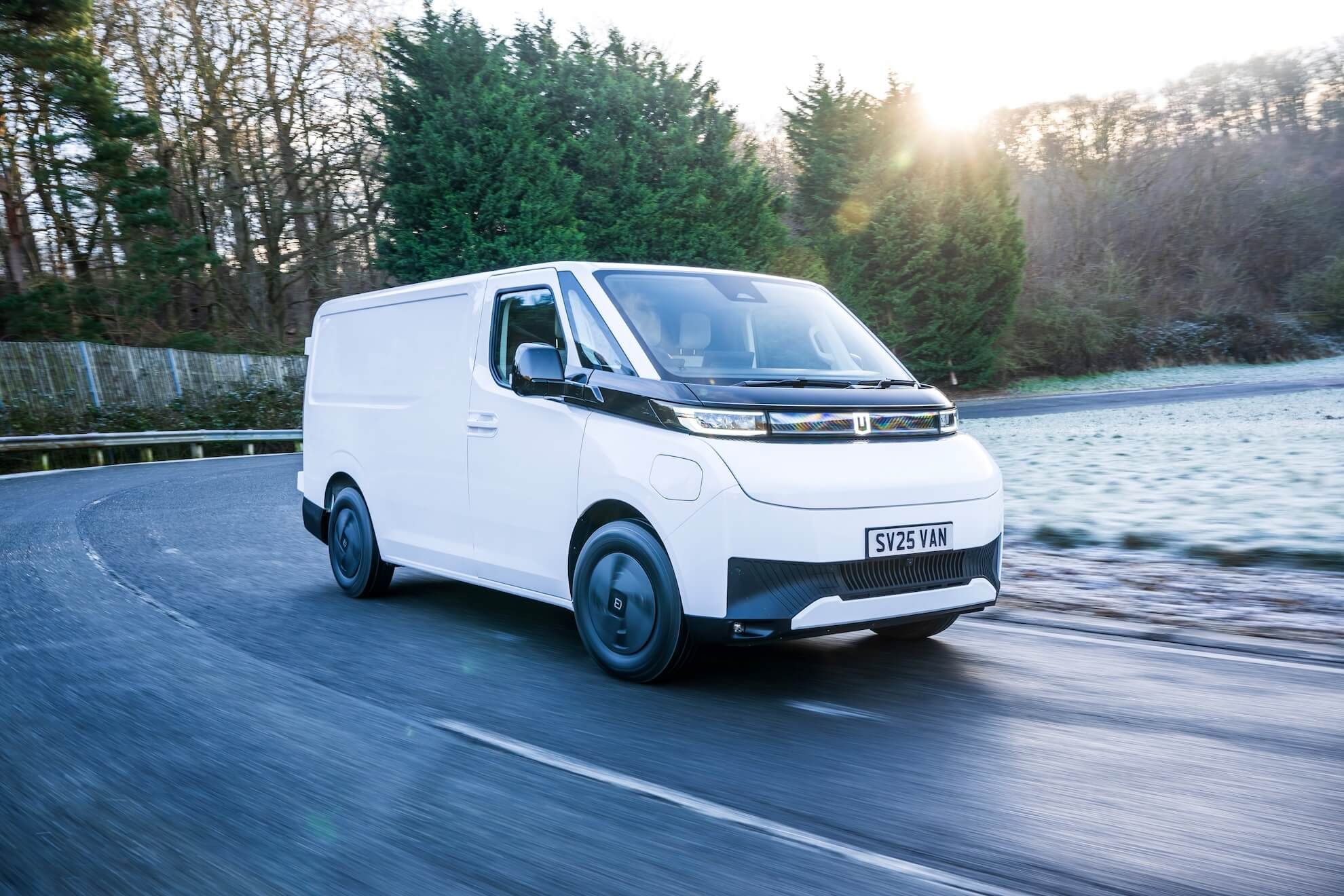
Electric vans in cold weather: maintaining range and performance
If you’re heading into winter and worried about the performance of your electric van in cold weather, look no further. In this article we’ll discuss the challenges and solutions for driving electric vans in low temperatures. Get your coat on, let’s go!
Breakdown:
Maintaining electric van range and performance in cold weather
Tips to maximise winter range for EVs
Battery protection & charging in winter
Winter ready: Maintaining electric van range and performance in cold weather
The number of electric vans on UK roads has grown substantially in recent years. With lower total cost of ownership, great performance, and access to emission-restricted zones, it’s no wonder fleets and small businesses are making the switch. Given this rising popularity, it is important to discuss one of the operational challenges of electric vehicles, winter, and the solutions for driving in cold conditions.
Why does cold affect EVs?
Firstly, yes, cold weather can affect electric vehicle performance. The reality is that electric vehicles can safely operate in extreme weather; it just requires an understanding of how cold temperatures can affect the battery. Fundamentally, the chemical reactions occurring within lithium-ion battery cells slow down and become less efficient when it is cold, decreasing vehicle range by 15 to 20 per cent.1
This is because the ideal operating temperature for EVs is between 15-35°C.2 Within this range, it is easy for the vehicle to self-regulate battery temperature and ensure that it remains within the window of optimum efficiency. Below this, energy is needed to heat the vehicle, particularly the battery.
Tips to maximise winter range for EVs
Are you concerned about EV range during winter? If so, here are some things you can do to maximise range.
- Preconditioning (battery): This process is either initiated automatically by the vehicle, through the vehicle console, or via a smartphone application. It warms up the battery, ready for driving or charging. Bringing the battery up to the optimum temperature provides both increased capacity and faster recharging.
- Preconditioning (cabin): Many EVs can start climate control systems before the journey commences to ensure that the cabin is a comfortable temperature before departure. If the vehicle is plugged in, grid energy can be used, saving battery charge. On some EVs, this can be automated, warming up at a pre-determined time and temperature. Preconditioning can improve efficiency by 3 to 7 per cent.3
- Warmers: Preconditioning can often be used to activate seat and steering wheel warmers. These systems are a more energy-efficient way to provide comfort in the cold, so prioritise them over climate control.
- Eco mode: Your climate control system may have an ‘eco’ mode. Try this to reduce the burden of auxiliary heating systems and improve range.
- Parking: If the vehicle can’t be left plugged in, try to park in a garage or insulated area during the colder months. This can shield it from the elements and reduce the amount of energy required to warm the battery and cabin when setting off.
- Tyre pressure: Ensure the tyres are set to the manufacturer’s recommended pressure for maximum efficiency.
- Driving style: To maximise range, minimise aggressive driving and accelerate smoothly. Remember that higher speeds in cold and dense air will significantly increase drag and decrease range. Maximise use of regenerative braking when it is safe to do so.
Battery protection & charging in winter
At lower temperatures, it is preferable to finish journeys at a location with charging facilities or with sufficient battery charge (20 per cent or more). You must avoid fully discharging the battery, particularly in cold weather. Why? Because the battery may not have enough energy to warm itself up and drive afterwards.
To ensure longevity, it is also worth restricting the maximum battery charge (if a full battery is not required) to 80 per cent.4 Subsequently, if you plan on taking a longer journey or are concerned about range, then simply change the setting and charge back up to 100 per cent. Regular use will also keep the battery in good condition across the extremes of seasons. If long-term storage is needed, find somewhere that is insulated and where the vehicle can remain safely plugged in (check manufacturer recommendations).
Remember that if the battery is cold, you may not be able to utilise the full power of DC chargers. The onboard Battery Management System will recharge at the maximum safe rate, but this will likely be slower during winter. If the battery is too cold, the system will use energy to warm the battery up until it is ready to accept charge.5
Regenerative braking & safety
It is also worth noting that cold temperatures can affect the regenerative braking system.2 Reducing the efficiency of this system will decrease vehicle range, an important consideration for longer journeys in winter. However, if conditions are icy, regenerative braking acts similarly to engine braking on a petrol or diesel vehicle, which can reduce stability on slick surfaces. If you are concerned and the conditions are poor, select a less aggressive regeneration mode. The advanced traction control systems on modern EVs will also help to keep you stable.
Whatever the weather
While colder temperatures can affect electric vehicle performance, range, and recharging rate, winter is easily manageable in today’s EVs. It’s important to understand how practices like preconditioning help to maximise efficiency and battery health while also extending range and improving comfort. Remember to avoid discharging the battery below 20 per cent, particularly if your destination does not have nearby charging infrastructure. Remaining proactive and knowledgeable about battery management can ensure that your EV remains reliable and effective throughout the winter months for year-round sustainable mobility.
1 https://fleetuk.com/blog/winter-ev-range-anxiety-electric-cars-in-cold-weather
2 https://wallbox.com/en/blog/ev-maintenance-in-cold-weather
3 https://www.consumerreports.org/cars/hybrids-evs/how-much-do-cold-temperatures-affect-an-evs-driving-range-a5751769461/
4 https://www.bppulse.co.uk/going-electric/maximizing-ev-battery-life-in-cold-weather
5 https://evgo.com/blog/chilly-charging-5-cold-weather-tips-for-evs/



